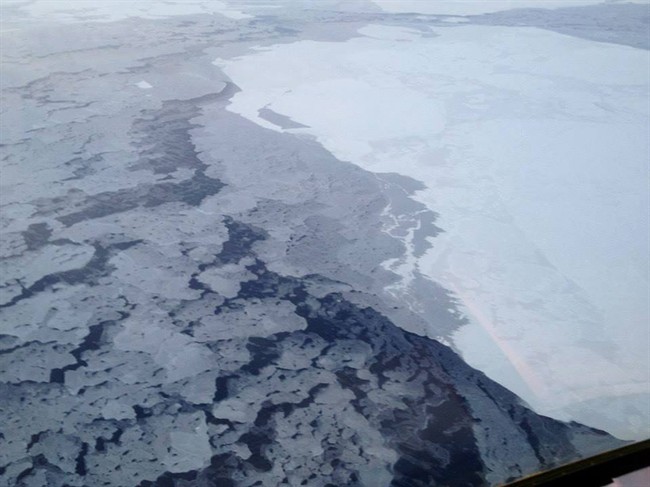TORONTO – For the first time, researchers have used satellite data to calculate the reflection of solar radiation in the Arctic, and that radiation is less than originally anticipated.

Scripps Institution of Oceanography graduate student Kristina Pistone and climate scientists Ian Eisenman and Veerabhadran Ramanathan used NASA satellites, which measured the output of solar radiation using microwaves, to calculate changes in the Arctic region’s reflectivity of sunlight back in to space.
“In 1979 the whole Arctic region, up to 60 degrees and north of that, was reflecting about 52 per cent of the solar radiation,” Pistone told Global News. “And then in 2011, that was down to 48 per cent.”
The reflectivity of sunlight in to space, called albedo, is measured as a percentage: a black surface has an albedo of zero, while a white surface has an albedo of 100.
- High benzene levels detected near Ontario First Nation for weeks, residents report sickness
- Enter at your own risk: New home security camera aims paintballs at intruders
- Fishing vessel with crane, net arrives in Zeballos for orca calf rescue
- Beijing orders Apple to pull WhatsApp, Threads from its China app store
Solar heat is absorbed in the upper ocean to a depth of about 20 metres. Over time, that heat is then released into the atmosphere, which can increase temperatures to about 1.6 km above the surface.
Since the 1970s the Arctic has warmed by 2 C as a result of increased carbon dioxide in our atmosphere, and scientists have noticed a trend in the decrease of Arctic ice.

But there are other factors that also contribute to Arctic ice melt.
READ MORE: Global warming: The changing face of the Arctic
That absorption of the sun’s radiation can cause ocean melt, which then absorbs more heat, which can in turn cause more melting.
WATCH: Conservatives in House of Commons questioned over their inaction in regards to Arctic radiation (Feb 24)
Though that absorption contributes to ice melt, Pistone said that the Arctic system is a complicated one and there are some other factors at work.
“We know that the ice has been retreating,” Pistone said. “And there are a number of reasons for it. The global temperature is warming and the polar temperatures are warming faster than the global average temperatures. So that’s one thing that comes into play. And then you also have the effects of dynamics, how the ice moves, how the atmosphere moves, what that does to the ice. There are a lot of things that do play into this.”
“We’re focusing on one small part of the climate system here.”
Correction: An earlier version of the story said that researchers used satellite data to calculate the loss of solar radiation due to Arctic sea ice melt.


Comments